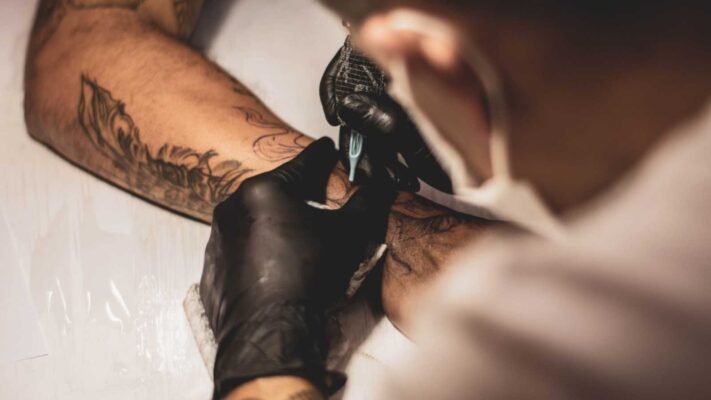Using Anesthetic Creams
- Thoroughly wash the skin area to be treated and dry it well.
- Apply a thick, even layer of cream. The recommended dose is 2–3 g for a small skin area. For larger areas, use 1–1.5 g per 10 cm².
- Cover the skin with plastic wrap or an occlusive dressing for 1–1½ hours (maximum 2 hours). On genital mucosa, application time can vary between 5 and 15 minutes.
- Remove the wrap or dressing and then clean the skin thoroughly with a damp wipe.
- No more than one container should be used in a single session.
Adverse Effects of Anesthetic Creams
- Numbness, headache
- Eye irritation if it contacts the eyes
- Skin sensations (redness, itching, warmth, burning) at the application site
- Altered taste
- Blurred vision
- Ringing in the ears
- Mild allergic skin reactions (redness, eczema) and—in rare cases—severe systemic allergic reactions such as anaphylactic shock.

In some cases, these substances can be absorbed into the bloodstream, causing serious effects such as arrhythmia (irregular heartbeat), breathing difficulties, neurological symptoms, convulsions, or even coma. In very severe cases, this can be fatal. That’s why you should inform your healthcare provider about all medications you’re taking when using these creams. Some drugs can increase their effect on methemoglobin levels (a condition where red blood cells lose their ability to carry oxygen).
Medications That May Interact
- Acetaminophen
- Chloroquine
- Dapsone
- Antiarrhythmics (heart rhythm medications)
- Nitrates (e.g., nitroglycerin, nitroprusside)
- Other topical anesthetic ointments, creams, or sprays
- Phenobarbital
- Phenytoin, quinine
- Antibiotics: sulfonamides (e.g., sulfacetamide, sulfamethoxazole, sulfasalazine)
- Benzocaine
Also, using these creams can mask pain signals—like burns—that you would otherwise feel. If these injuries aren’t noticed and treated promptly, unsightly scarring may occur.
Even though these products are available without a prescription, remember they are medications. Unsupervised or improper use can lead to uncontrolled adverse effects.
Comparison and Recommendations
Due to the rise in laser hair removal centers and technician recommendations to use anesthetic creams, health authorities have issued guidelines. For example, the U.S. FDA has warned providers and users about misuse of these creams during laser treatments. Key recommendations include:
- Do not use these creams without consulting a healthcare professional.
- Use only the recommended amount—avoid overapplication.
- Avoid using on large skin areas (e.g., full legs).
- Do not apply to irritated skin, rashes, cuts, abrasions, or mucous membranes, where absorption is greater.
- Avoid heat on treated areas—higher temperatures can increase systemic absorption.
- Avoid during pregnancy—these creams can cross the placenta.
- Use caution during breastfeeding—lidocaine and prilocaine can be excreted in breast milk in small amounts.
Proper, medically supervised use of these creams can prevent discomfort and make procedures like laser hair removal more tolerable. As with any medication, read the instructions carefully and follow them to avoid problems.
Storage of Anesthetic Creams
- Keep out of reach of children
- Use before the expiration date on the package
- Once opened, use within 6 months. Store below 30 °C.
- Do not dispose of in drains or household trash
- Ask your pharmacist about proper disposal of containers and unused medication
- Do not refrigerate or freeze
Using anesthetic creams appropriately can significantly reduce discomfort during laser hair removal and make treatments more comfortable for clients.
